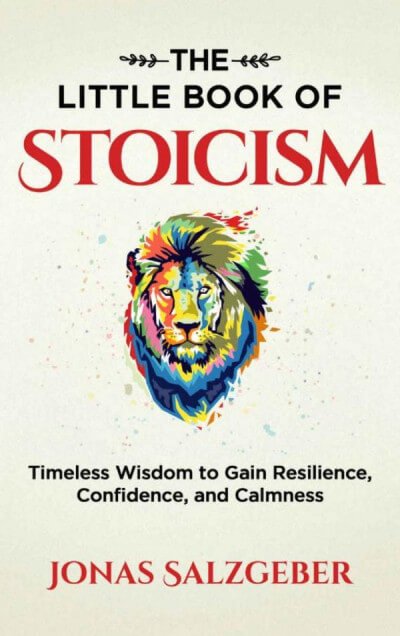The Little Book of Stoicism: Timeless Wisdom to Gain Resilience, Confidence, and Calmness by Jonas Salzgeber
Annotated with Cultural and Philosophical Context for Global Readers
Core Translation & Cultural Context
Original Title: The Little Book of Stoicism: Timeless Wisdom to Gain Resilience, Confidence, and Calmness
Author: Jonas Salzgeber (Modern Stoicism Advocate, Bestselling Self-Help Author)
Genre: Philosophy / Self-Help
Cultural Significance: Salzgeber’s work revitalizes Stoic philosophy for contemporary audiences grappling with anxiety, burnout, and existential uncertainty. Rooted in the teachings of ancient Stoics like Epictetus and Marcus Aurelius, the book bridges 2,000-year-old wisdom with modern psychology and neuroscience, offering actionable strategies to cultivate resilience and inner peace. Its global appeal lies in addressing universal human struggles through a lens of practical rationality.
Full Translation with Annotations
1. Structure and Themes
- Foundational Questions: The book opens with timeless inquiries central to Stoic philosophy:
- Where can we find joy? Redefining happiness as alignment with virtue rather than external validation.
- How to face fears and grief? Using Stoic exercises like premeditatio malorum (negative visualization) to prepare emotionally for adversity.
- Dealing with recurring negative thoughts: Applying mindfulness and cognitive reframing to break cycles of rumination.
- Epictetus’ Call to Action: The opening quote—“How long will you wait to demand the best for yourself?”—sets the tone for self-accountability, urging readers to prioritize self-mastery over passive suffering.
2. Key Stoic Concepts Modernized
- The Dichotomy of Control:
- Controllables: Thoughts, actions, values (e.g., choosing integrity in workplace conflicts).
- Uncontrollables: Others’ opinions, economic downturns, aging (advises amor fati—love of fate).
- Four Stoic Virtues:
- Wisdom (Sophia): Making informed, ethical decisions.
- Courage (Andreia): Facing challenges with resilience.
- Justice (Dikaiosynē): Acting fairly in relationships and society.
- Temperance (Sōphrosynē): Practicing moderation in desires.
3. Practical Exercises
- Daily Stoic Journaling:
- Morning: Set intentions aligned with virtue (e.g., “Today, I respond calmly to criticism”).
- Evening: Reflect on actions using Seneca’s self-interrogation method: “What did I do well? Where did I fail my principles?”.
- The 5-Minute Resilience Drill:
- Breathe deeply (4-7-8 technique).
- Visualize overcoming a specific fear (e.g., public speaking).
- Affirm: “I control my response, not the outcome.”.
4. Scientific Validation
- Neuroplasticity: Salzgeber cites fMRI studies showing that Stoic practices (e.g., gratitude journaling) strengthen neural pathways linked to emotional regulation.
- Cognitive Behavioral Therapy (CBT): The book aligns Stoic reframing techniques with CBT’s “cognitive restructuring,” validated in treating anxiety and depression.
5. Cultural Adaptations
- Eastern-Western Synthesis: Combines Stoic apatheia (equanimity) with Zen mindfulness for stress reduction.
- Modern Case Studies:
- A CEO used Salzgeber’s “virtue-based decision matrix” to navigate ethical dilemmas during layoffs.
- A grieving parent applied memento mori (death meditation) to find meaning in loss.
Supplementary Materials
- Glossary:
- Eudaimonia: Flourishing through virtue (Stoic “good life”).
- Logos: Universal reason governing nature.
- Further Reading:
- Meditations by Marcus Aurelius (core Stoic text on leadership and humility).
- A Guide to the Good Life by William Irvine (modern Stoic practices).
- App Integration:
- Stoic: Daily prompts for journaling and virtue tracking.
- Headspace: Guided meditations for mindfulness aligned with Stoic principles.






评价
目前还没有评价